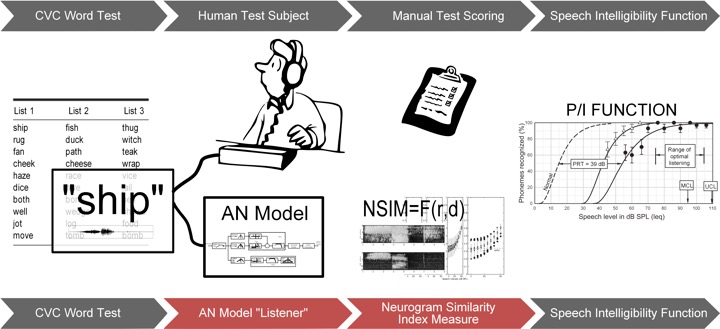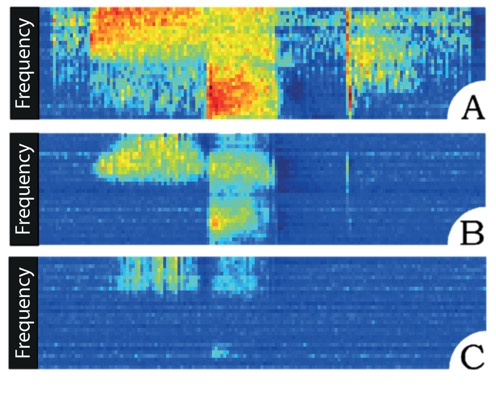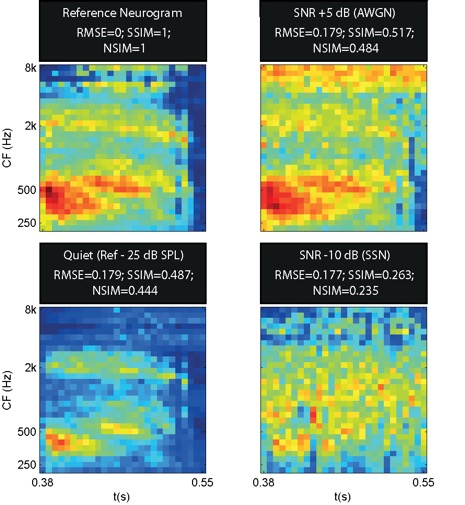Predicting Speech Intelligibility for Hearing Aids

Hearing impairment, and specifically sensorineural hearing loss, is an increasingly prevalent condition, especially amongst the ageing population. It occurs primarily as a result of damage to hair cells that act as sound receptors in the inner ear and causes a variety of hearing perception problems, most notably a reduction in speech intelligibility. Accurate diagnosis of hearing impairments is a time consuming process and is complicated by the reliance on indirect measurements based on patient feedback due to the inaccessible nature of the inner ear. The challenges of designing hearing aids to counteract sensorineural hearing losses are further compounded by the wide range of severities and symptoms experienced by hearing impaired listeners.
Computer models of the auditory periphery have been developed, based on phenomenological measurements from auditory-nerve fibres using a range of test sounds and varied conditions. It has been demonstrated that auditory-nerve representations of vowels in normal and noise-damaged ears can be ranked by a subjective visual inspection of how the impaired representations differ from the normal. This thesis seeks to expand on this procedure to use full word tests rather than single vowels, and to replace manual inspection with an automated approach using a quantitative measure. It presents a measure that can predict speech intelligibility in a consistent and reproducible manner. This new approach has practical applications as it could allow speech-processing algorithms for hearing aids to be objectively tested in early stage development without having to resort to extensive human trials.
Simulated hearing tests were carried out by substituting real listeners with the auditory model. A range of signal processing techniques were used to measure the model’s auditory-nerve outputs by presenting them spectro-temporally as neurograms. A neurogram similarity index measure (NSIM) was developed that allowed the impaired outputs to be compared to a reference output from a normal hearing listener simulation. A simulated listener test was developed, using standard listener test material, and was validated for predicting normal hearing speech intelligibility in quiet and noisy conditions. Two types of neurograms were assessed: temporal fine structure (TFS) which retained spike timing information; and average discharge rate or temporal envelope (ENV). Tests were carried out to simulate a wide range of sensorineural hearing losses and the results were compared to real listeners’ unaided and aided performance. Simulations to predict speech intelligibility performance of NAL-RP and DSL 4.0 hearing aid fitting algorithms were undertaken. The NAL-RP hearing aid fitting algorithm was adapted using a chimaera sound algorithm which aimed to improve the TFS speech cues available to aided hearing impaired listeners.

Figure Neurogram for word “Ship”: (A) Normal hearing; (B) moderate loss; (C) severe loss.
NSIM was shown to quantitatively rank neurograms with better performance than a relative mean squared error and other similar metrics. Simulated performance intensity functions predicted speech intelligibility for normal and hearing impaired listeners. The simulated listener tests demonstrated that NAL-RP and DSL 4.0 performed with similar speech intelligibility restoration levels. Using NSIM and a computational model of the auditory periphery, speech intelligibility can be predicted for both normal and hearing impaired listeners and novel hearing aids can be rapidly prototyped and evaluated prior to real listener tests.

Figure RMSE similar for all noise but actual intelligibility follows the NSIM scores
Related Articles
A. Hines, N. Harte. Speech intelligibility prediction using a Neurogram Similarity Index Measure. Speech Communication, 54 (2):306–320, 2012.
A. Hines, N. Harte. Speech intelligibility from image processing. Speech Communication, 52(9):736–752, 2010.
